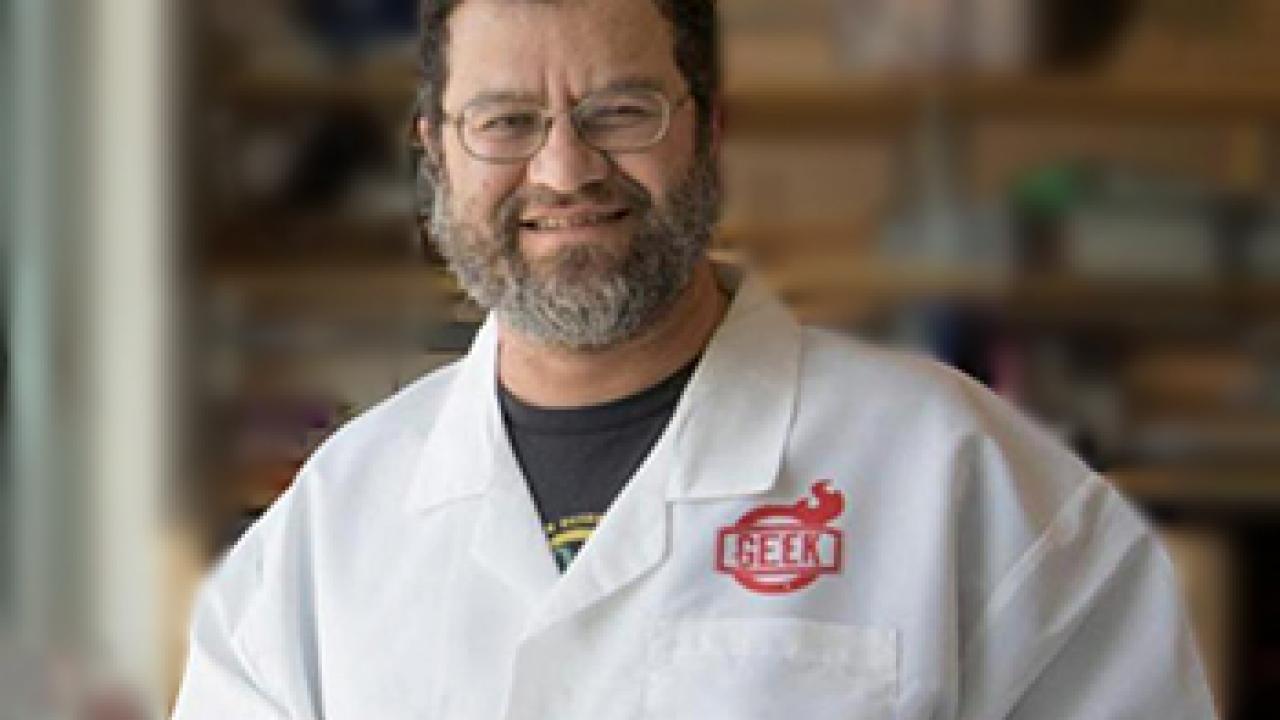
Wanted: Field guide to coronaviruses, says UC Davis evolutionary biologist
Mapping microbes and viruses can prepare us to better fight the next COVID-19
(SACRAMENTO) — In this age of COVID-19, Jonathan Eisen says what we really need is a field guide to coronaviruses. We’ll need it when the next new dangerous virus appears, and we are not close.
Eisen, a UC Davis Health professor of microbiology and immunology and an evolutionary biologist in the UC Davis Genome Center, is not trying to scare anyone. But he says if we better understood all coronaviruses, we could have more quickly and effectively fought back against COVID-19.
Eisen was part of the team that recently showed there are thousands of different types of bacteria living on cellphones and shoes. It was the largest study of its kind in the U.S., and it said clearly that our shoes and phones do not suddenly pose some new risk. The study was about understanding, and mapping, our planet.
“We just don’t have a good survey of the natural wild diversity of microbes on Earth,” Eisen said. “What we need is a field guide. It’s like with birds. If a weird bird shows up at the Yolo Bypass, because I have a field guide, I’ll know if it’s out of place or there at the wrong time, and possibly where it came from.”
His recent study was not connected to COVID-19, and yet it is. Eisen said we also need to develop a field guide to coronaviruses.
We knew almost nothing about COVID-19
“If we had a data base of all the coronaviruses on the planet, and all of a sudden a new one showed up,” he said, “we could figure out where it came from in a day.”
Eisen said many researcher have been trying to build viral databases, including the PREDICT project led by UC Davis (in which he is not involved), and he believes what we need is more such projects.
Imagine, Eisen said, going to Yosemite when none of the organisms there had been described anywhere. “You might be saying, ‘What is the furry thing attacking my friend?’ We’re almost like that now with coronaviruses,” he said.
The Centers for Disease Control and Prevention (CDC) says there are hundreds of coronaviruses, and most circulate among animals. “Hundreds” is an estimate.
The CDC says seven known coronaviruses can infect people. The four most common cause mild to moderate upper-respiratory tract illnesses, like the common cold. Three are much more serious – the viruses that caused Severe Acute Respiratory Syndrome (SARS) and Middle East Respiratory Syndrome (MERS), and this novel coronavirus that causes COVID-19.
But there is so much about them that are unknown, Eisen said. That’s why we’re still trying to learn more about everything from how it’s transmitted to whether COVID-19 survivors have immunity.
And that’s why we need a field guide, Eisen said. A field guide is not just a catalog, it’s also a collection of information about the biological properties and behaviors of different organisms.
“Look at this huge argument that went on about whether the new Sars-CoV-2 was grown in a lab,” Eisen said. “It was based on tiny amounts of data because we don’t know what the natural variations of coronaviruses are supposed to look like. And people could take advantage of this lack of knowledge to propose conspiracy theories that were hard to refute.”
How to create a field guide for coronavirus
“The planet is big, viruses are small, we don’t have the technology to collect a billion samples. But we might if we engage the general public.”
Collecting enough data to map and truly understand the viruses would take some version of crowd sourcing, Eisen said. That’s another connection to his shoes and phones study. Their survey methods could be something of a model for a larger effort.
For the shoes and phones study, UC Davis graduate student and professional cheerleader Wendy Brown, Darlene Cavalier of Science Cheerleaders Inc. and her colleagues swabbed shoes and phones of almost 3,500 spectators at sporting events, meetings and other gatherings across the country.
To build a coronavirus field guide (or a field guide for any microbes), Eisen said in his perfect scenario there would be both scientists organizing sampling efforts (like with PREDICT) as well as community sampling. That would have members of the public across the globe swabbing buildings, wastewater and more – and themselves.
“The planet is big, viruses are small, we don’t have the technology to collect a billion samples,” he said. “And you’re not going to build a full field guide just with a handful of scientists running around. But you might do it if you engage the general public to join in.”
Eisen says he understands the pie-in-the-sky nature of his suggestion.
“When I give talks I say, ‘I know this is ridiculous, but it can serve as an organizing principle,’” he said. “It can help us set the goal of creating field guides to microbes or just coronaviruses. This family of coronavirus and other emerging infectious pathogens are going to show up again and again. We won’t have a good way to put them in context without a plan. A goal of a full field guide to microbes would help us be better prepared.”